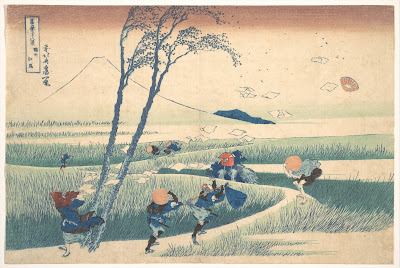The temptation to say yes to every opportunity that comes your way is strong, but it will wreck your focus.
 |
| Skylarking 2, 18X24, oil on linen, $1855 unframed. |
This week, I cancelled my Cody, WY, workshop. There was nothing wrong with it in concept; it generated a lot of interest. The trouble started when students looked for rental cars. There weren’t any available, and in the nearby larger markets, rental rates were extortionate.
This is nobody’s ‘fault’; it’s an unforeseen result of COVID. However, that doesn’t give me a free pass to ignore the consequences. I still had a lot of clerical work to do to make the cancellation. That—along with the lost work and expense of setting up the workshop up in the first place—is part of the cost of doing business.
This is the time of year when I suddenly notice that I’m making lots of mistakes. That’s because I’m working myself too hard. That’s partly because of summer visitors, but it’s also because of my business model. I live and work in a tourist town, where we make hay while the sun shines.
| Skylarking, 24X36, oil on canvas, $3985. |
Every year at this time I reach a point where I can’t manage the clerical stuff on my own. There are only two solutions:
- Scale back, or
- Hire some of it out.
There are good arguments against either. Scaling back would reduce my income. Hiring is difficult in this market, and it would require raising prices.
To be self-employed without a secretary has only possible because of the remarkable improvement in business efficiency in the last few decades. Take paying bills, for example. It used to be a half-day affair that involved writing checks, addressing and mailing envelopes, and a quaint bookkeeping activity called “balancing the checkbook.” Now I can do it—including checking all accounts for fraudulent activity—in an hour every other week.
 |
| Belfast harbor, oil on canvasboard, $1594, framed. |
Unfortunately, that has been replaced by other activities that are equally time-consuming. The biggest of these is social media, but it’s the best advertising at our disposal. When artists tell me, “I don’t have time for that,” they’re ignoring the first requirement of business, which is marketing.
Still, the reality for all self-employed people is that there are only 2000 working hours in the year. You have to be able to do all your tasks in that allotted time, or you’ll fail. Years ago, my friend and fellow painter Bobbi Heath taught me a simple time-managementsystem. The take-away lesson is that not everything will get done. Your job as a manager is to figure out which needs to be done most urgently, and to let the chaff fall.
 |
| Owls Head, 8X10, $652 framed. |
Like most of us, I have a hard time saying no, but saying no doesn’t make me a failure or a bad person. It means I’ve prioritized other activities.
The temptation to say yes to every opportunity that comes your way is strong, especially when you’re just setting out. People will ask you to paint all kinds of things, in all kinds of places. “Your dog, at your wedding reception? What time should I be there?”
But many of these ‘opportunities’ are really just cul de sacs that will spread you too thin, and cost you your focus. If they can’t be done well, don’t do them at all.










